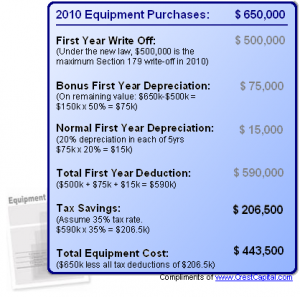Manufacturers in the U.S. are more optimistic about sales next year and plan to ramp up spending on new equipment, signaling factories will keep leading the economic recovery, according to a survey by the Institute for Supply Management.
Purchasing managers at factories anticipate sales will grow 5.6 percent next year and business capital investment will jump 15 percent, the Tempe, Arizona-based group’s semiannual forecast showed today. Sales and spending will increase at a slower pace among service providers that account for about 90 percent of the economy.
Manufacturers “are optimistic about their organizations’ prospects as they consider the first half of 2011, and they are even more positive about the second half,” Norbert Ore, chairman of the group’s factory survey, said in a statement. “While 2010 has been a year of recovery in manufacturing, our forecast sees improvements in both investment and employment.”
The gains in sales and investment exceed projected increases in payrolls, indicating the labor market will be slow to improve. Factory employment is projected to increase 1.8 percent in 2011, compared with a 0.3 percent rise at service industries.
A weakening dollar and demand for American-made goods in faster-growing markets such as China and Brazil are lifting growth at factories, driving the recovery. Holiday-season sales gains at retailers indicate services also are contributing to the expansion.
Revenue is forecast to rise 3.4 percent at service industries, while capital spending is projected to increase 3.7 percent.
More Optimism
Services “have a higher level of optimism about the next 12 months than they had last December for 2010,” Anthony Nieves, chairman of the group’s services survey, said in a statement.
Earlier this month, ISM figures for November showed manufacturing grew for a 16th consecutive month, and service industries expanded at the fastest pace in six months.
Even so, the world’s largest economy isn’t growing quick enough to bring down unemployment. The jobless rate rose to seven-month high of 9.8 percent in November and payroll gains slowed to 39,000 from 172,000 in the previous month, a Labor Department report showed on Dec. 3.
Today’s survey showed manufacturing revenue will post a 7.9 percent increase in 2010. Sales at service companies will rise 0.2 percent this year, the group said.
Retail sales rose in November by the most in eight months, led by Abercombie & Fitch Co. and J.C Penney Co., as shoppers took advantage of discounts, particularly during the Thanksgiving weekend. Overall, same-store sales at the more than 30 chains tracked by Retail Metrics Inc. increased 5.3 percent, beating analysts’ estimates.
To contact the reporter on this story: Shobhana Chandra in Washington at schandra1@bloomberg.net
To contact the editor responsible for this story: Christopher Wellisz at cwellisz@bloomberg.net

